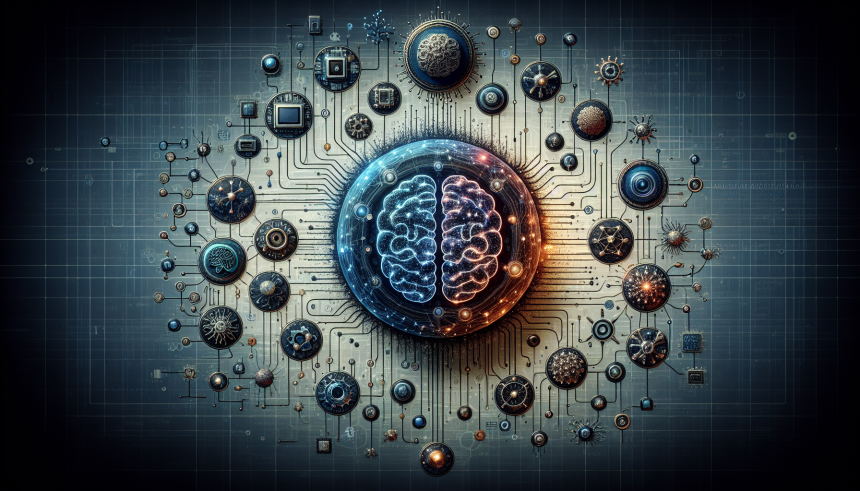Understanding Knowledge Types in Artificial Intelligence
Artificial Intelligence (AI) is fundamentally about simulating human intellect in machines. This involves processing various types of knowledge. To create a robust framework for AI, it is crucial to understand the different types of knowledge and how they interrelate. This article explores the essential knowledge types—declarative, procedural, experiential, contextual, and tacit—and their roles in building a comprehensive AI system.
Declarative Knowledge
Declarative knowledge refers to facts and information that can be articulated, described, or communicated. This type of knowledge is often explicit and can be easily stored in databases. In AI, declarative knowledge is critical for building knowledge bases and ontologies that inform machine learning algorithms.
For instance, in natural language processing (NLP), declarative knowledge enables AI systems to understand context through linguistic rules and semantics. When developing chatbots or virtual assistants, incorporating rich declarative knowledge helps improve their ability to answer questions accurately.
Key elements of declarative knowledge include:
- Facts: Fundamental truths about the world, such as “Paris is the capital of France.”
- Concepts: Categories, such as animals or fruits, that help classify knowledge.
- Properties: Characteristics that describe concepts, like ‘a dog has four legs.’
Procedural Knowledge
Procedural knowledge is the knowledge of how to perform tasks. This type of knowledge is implicit and often internalized through practice. In AI applications, procedural knowledge can be represented through algorithms and neural network architectures that dictate the sequence of operations needed to achieve specific outcomes.
For example, in robotics, procedural knowledge is vital for controlling motion and interaction with the environment. An AI-powered robot uses procedural knowledge when carrying out complex tasks, such as navigating through obstacles or assembling products.
Key aspects of procedural knowledge include:
- Rules and Algorithms: Defined sequences of steps to solve a problem.
- Best Practices: Proven strategies that improve efficiency and effectiveness in task execution.
- Skill Acquisition: The gradual improvement of task execution through experience.
Experiential Knowledge
Experiential knowledge is gained through personal experiences and practice over time. It’s often more subjective and involves learning from successes and failures. In AI, experiential knowledge can be integrated via machine learning techniques, particularly through supervised and unsupervised learning methods.
A practical application is found in recommendation systems. By analyzing user interactions and preferences over time, AI can learn to provide personalized recommendations. This iterative learning process mirrors how humans refine their judgments based on experiences.
Key components of experiential knowledge include:
- Feedback Loops: Mechanisms that enable systems to learn from previous performances.
- Pattern Recognition: Identifying trends or anomalies based on past data to inform future decisions.
- Adaptation: Altering behavior as a result of new experiences.
Contextual Knowledge
Contextual knowledge is the understanding of the environment or situation relevant to a particular concept or behavior. It greatly influences how decisions are made. In AI, contextual knowledge is crucial for creating systems that can respond appropriately to varying situations.
For example, in autonomous vehicles, contextual knowledge allows the AI to understand road conditions, weather variations, and social cues from pedestrians. It requires the integration of real-time data from multiple sources to make informed decisions.
Key features of contextual knowledge include:
- Situational Awareness: The ability to perceive environmental elements and their meanings accurately.
- Temporal Understanding: Recognizing how time affects information relevance and decision-making.
- Cultural Sensitivity: Adapting responses in AI chatbots based on cultural contexts to improve user engagement.
Tacit Knowledge
Tacit knowledge is often difficult to articulate because it stems from personal intuition and instinct. This type of knowledge is inherently subjective and involves insights gained from personal experiences rather than formalized data. In AI, tacit knowledge can be represented through deep learning models, which learn complex patterns from data without explicit programming.
For instance, in creative fields such as art and music generation, AI utilizes tacit knowledge through neural networks trained on various styles and forms. The AI synthesizes new artwork or compositions based on what it has learned, generating outputs that reflect both innovative and traditional styles.
Key attributes of tacit knowledge include:
- Intuition: Immediate understanding or knowing that lacks obvious reasoning.
- Sensory Experience: Knowledge gained from physical experiences and interactions with the environment.
- Personal Insight: Unique interpretations that an individual or AI system develops over time.
Interrelationship of Knowledge Types
Understanding the complexities of these knowledge types and their interrelationships is vital for developing robust AI systems. Integrating these types effectively can lead to a more intelligent and well-rounded AI framework.
For example, a healthcare AI might utilize:
- Declarative Knowledge: Medical facts and terminologies.
- Procedural Knowledge: Algorithms for diagnosing disease.
- Experiential Knowledge: Patient histories and treatment outcomes to improve recommendations.
- Contextual Knowledge: Environmental factors that affect patient well-being.
- Tacit Knowledge: Intuitive decisions by healthcare providers that inform AI actions.
Framework Design Considerations
In creating a robust framework for AI, developers should consider:
- Modular Architecture: Designing systems with separate modules for each type of knowledge allows for flexibility and ease of updates.
- Interoperability: Ensuring different knowledge types can communicate within the AI ecosystem increases overall efficacy.
- Scalability: The framework should accommodate the growing complexity of knowledge types as applications evolve.
Conclusion
Knowledge types such as declarative, procedural, experiential, contextual, and tacit are foundational to creating effective AI systems. By understanding and integrating these various forms of knowledge, developers can build AI applications that not only mimic but also enhance human intelligence. This comprehensive framework will support innovative solutions in a wide array of fields, ultimately leading to smarter, more adaptive technologies.
By prioritizing the distinct roles of these knowledge types, AI practitioners can ensure that their systems are not just capable but also intelligent in navigating complex environments and tasks. This holistic approach will be essential for the future of AI development and its practical applications.


